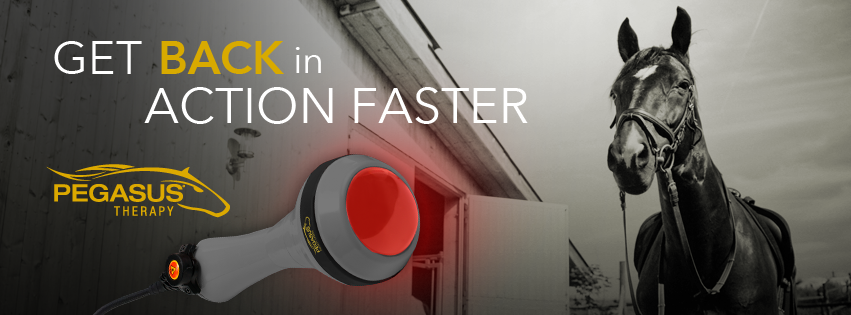Why Equine Therapy is Coming To Be a Preferred Alternative for Emotional Health
Why Equine Therapy is Coming To Be a Preferred Alternative for Emotional Health
Blog Article
Exactly How Laser Therapy in Equine Therapy Is Reinventing Vet Treatment for Steeds
Laser treatment has emerged as a transformative strategy in equine veterinary care, giving a non-invasive remedy that accelerates recovery and boosts total health. The mobility and versatility of laser therapy tools further highlight their expanding necessity among veterinarians.
Recognizing Laser Therapy

The modern technology behind laser treatment is based in the concept of photochemistry, where photons are soaked up by chromophores within cells, leading to increased ATP production and modulation of reactive oxygen species (Equine Therapy). This, in turn, promotes cellular proliferation, reduces inflammation, and accelerates healing. Veterinary practitioners utilize different types of lasers, including low-level lasers (LLLT) and high-power Class IV lasers, depending on the particular restorative goals and the nature of the equine condition being treated
Different laser wavelengths and power settings are thoroughly chosen to target numerous cells midsts and achieve desired medical outcomes. Safety protocols are extremely important, as inappropriate use can bring about thermal damages or suboptimal healing results. Thus, a comprehensive understanding of laser treatment's devices and applications is critical for its reliable execution in equine veterinary practice.
Advantages for Horse Health And Wellness
The myriad advantages of laser therapy for equine health and wellness include boosted recovery, pain decrease, and improved flexibility. This sophisticated therapy method leverages details wavelengths of light to penetrate cells, stimulating cellular feature and promoting fast cells repair work. The non-invasive nature of laser treatment ensures very little anxiety and discomfort for the equine, facilitating a smoother healing procedure.
Improved recovery is one of the leading advantages, as laser therapy speeds up mobile regrowth and collagen synthesis. Discomfort decrease is achieved through the anti-inflammatory effects of laser therapy, which reduces swelling and minimizes the manufacturing of pain-inducing chemicals.
Better movement is one more essential benefit, particularly for efficiency and functioning steeds. By lowering swelling and discomfort, and boosting tissue repair service, laser treatment helps in bring back joint feature and muscular tissue adaptability. The cumulative result of these advantages is not only a quicker return to normal task but also an overall improvement in the horse's top quality of life. Thus, laser therapy stands as a transformative device in modern-day horse veterinary care.
Usual Problems Dealt With
Laser treatment has arised as a versatile therapy option for a selection of common equine problems. Additionally, laser treatment is effective for problems like osteoarthritis, where it assists mitigate joint swelling and advertise tissue fixing.
Wound management is an click for source additional area where laser therapy has actually shown considerable promise. Chronic injuries or slow-healing ulcers can be especially challenging in equines, yet laser therapy improves mobile regeneration and enhances blood circulation, therefore quickening the healing procedure. Laser therapies have been effectively employed in handling unguis conditions such as laminitis and abscesses, easing discomfort and promoting much faster healing.

Innovation Behind Laser Therapy
Beyond the myriad conditions treatable with laser therapy, the technology itself benefits closer examination. At the heart of laser treatment is using particular wavelengths of light to pass through tissues and evoke organic actions. These visit this website wavelengths, commonly varying from 600 to 1000 nanometers, are precisely absorbed by chromophores in the skin, muscle mass, and various other tissues, instigating a cascade of mobile events.
Laser devices made use of in vet medicine often make use of low-level laser treatment (LLLT) or cold laser treatment. Unlike high-powered medical lasers, these devices run at lower energy degrees, enhancing therapeutic advantages while reducing thermal damages. The power from the laser light stimulates adenosine triphosphate (ATP) manufacturing, improves mobile metabolic process, and accelerates cells repair service processes.

Success Stories and Case Research Studies

Showcasing the substantial benefits of laser therapy, various success stories and situation researches brighten its transformative influence on equine health. One such case involves a pureblooded racehorse struggling with persistent tendonitis. Typical therapies produced marginal renovation, yet after incorporating laser treatment right into the routine, the steed showed substantial decreases in swelling and pain within weeks, inevitably returning to competitive auto racing.
An additional engaging instance includes a dressage equine diagnosed with severe pain in the back, restricting its performance. A check it out vet group utilized low-level laser therapy (LLLT) to target the inflamed locations, causing marked enhancement in flexibility and a notable decline in pain. Over a number of sessions, the horse reclaimed its peak kind, showcasing the effectiveness of laser therapy in addressing bone and joint problems.
Additionally, a research carried out at a leading equine center examined 50 steeds with different soft tissue injuries treated with laser treatment. The results stood out: 85% of the equines demonstrated increased healing times and improved wheelchair. These situations emphasize the adaptability and effectiveness of laser treatment in equine medicine, offering a non-invasive, scientifically-backed technique to enhancing recuperation and performance in steeds.
Conclusion
Laser treatment is transforming equine vet care by supplying a non-invasive treatment that increases healing, lowers inflammation, and relieves pain. With its performance in treating a series of conditions, from bone and joint injuries to persistent conditions like osteo arthritis, this technology dramatically enhances equine health and wellness and mobility. The mobility and flexibility of laser therapy additionally underscore its transformative effect on vet practices, strengthening its role as a crucial tool in modern-day equine healthcare.
Report this page